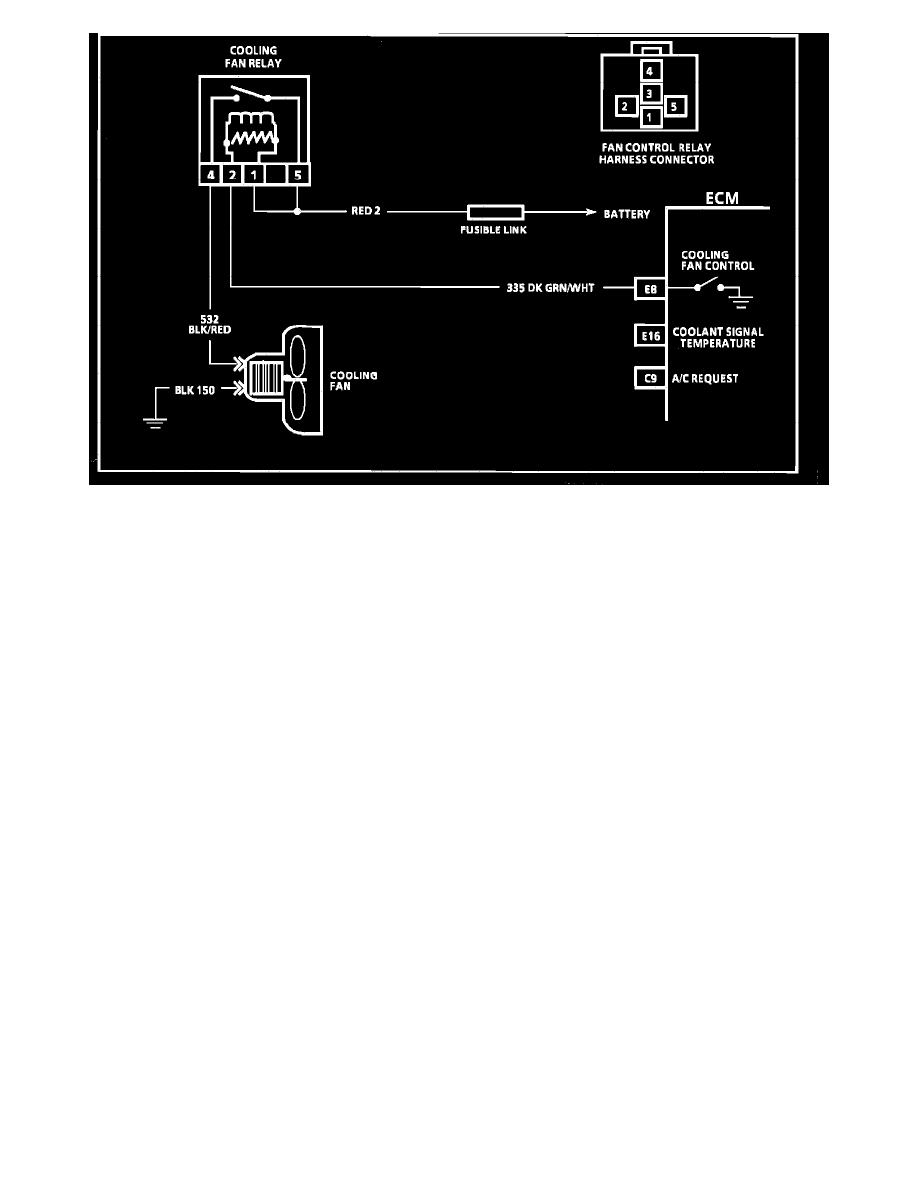Skyhawk L4-121 2.0L VIN K TBI (1987)

Wiring Diagram for Engine Cooling Fan Control Circuit
CHART C-12 ENGINE COOLING FAN SYSTEM CHECK
Circuit Description:
The high speed relay coil is energized, whenever ignition is turned "ON". Because power for the points of this relay is supplied by the low speed relay,
the fan will not turn "ON", until the ECM grounds CKT 335, which energizes the low speed fan relay. As long as ignition is "ON", and ECM commands
the fan, it should run on high speed.
The ECM can command low speed fan, when the engine is shut down (ignition "OFF"). Under hot conditions (based on MAT, coolant, and engine run
time), the ECM will stay "powered up" and ground CKT 335. Because the ignition is "OFF", the high speed relay will not energize and the fan will run
on low speed (resistor circuit). If the ECM sees a need for fan after shut down, the fan will run for a minimum of 20 seconds up to a maximum of 7
minutes, after key "OFF". This shutdown feature can extend the life of the turbo, by reducing underhood temperature after shutdown.
The ECM will turn "ON" the fan (ignition "ON"), when the coolant temperature is approximately 108 degrees C. The ECM will, also, command constant
fan (ignition "ON"), when it sees voltage on A/C request line (A/C "ON") regardless of temperature, or if a Code 14 or 15 is stored.
Diagnostic Aids:
1.
Because of the shutdown fan feature (described above), the fan may be running with key "OFF" for up to 7 minutes. If fan does not stop within this
time period, disconnect low speed fan relay. If fan stops, CKT 335 is shorted to ground, or it's a faulty relay. If fan continues to run, with relay
disconnected, CKT 903, or CKT 532, is shorted to 12 volts.
2.
If the owner complained of an overheating problem, it must be determined if the complaint was due to an actual boil over, or the "hot light", or
temperature gauge indicated overheating. If the gauge, or light, indicates overheating, but no boilover is detected, the gauge circuit should be
checked. The gauge accuracy can, also, be checked by comparing the coolant sensor reading using a "Scan" tool and comparing its reading with
the gauge reading. If the engine is actually overheating and the gauge indicates overheating, but the cooling fan is not coming "ON", the coolant
sensor has probably shifted out of calibration and should be replaced.
